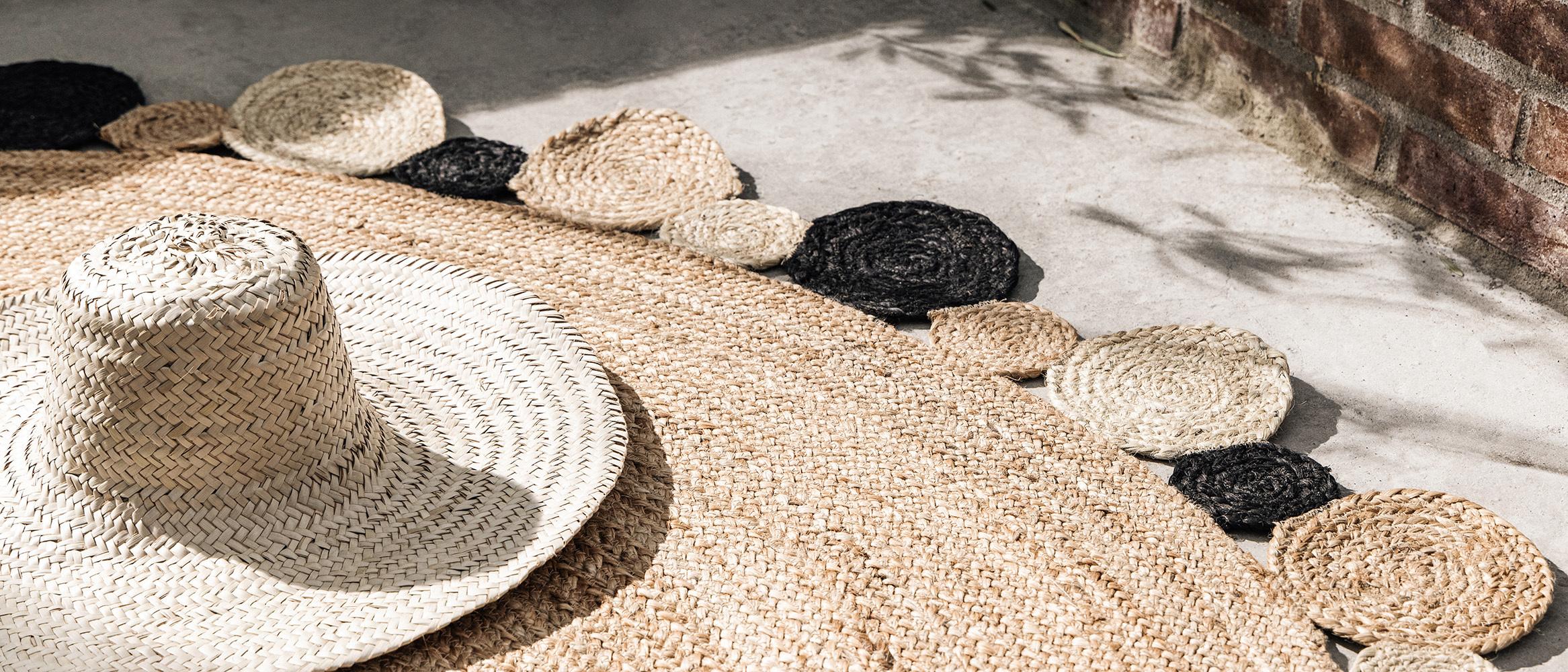The best materials for outdoor rugs:
exploring the top choices
Decorating your exterior space with an outdoor rug is a great way to spruce up your garden, balcony, patio or wood deck. But, choosing a suitable rug for these spaces comes with challenges. Alongside considering rug size and rug color, it’s essential to find the best materials for outdoor rugs.
The best outdoor rug materials are generally durable and weather-resistant. But, with each specific type offering its own benefits and unique feel, making the right choice isn’t always easy. Below, we’ve put together a complete guide on the best materials for outdoor rugs, including some of the most popular choices for various exterior spaces.
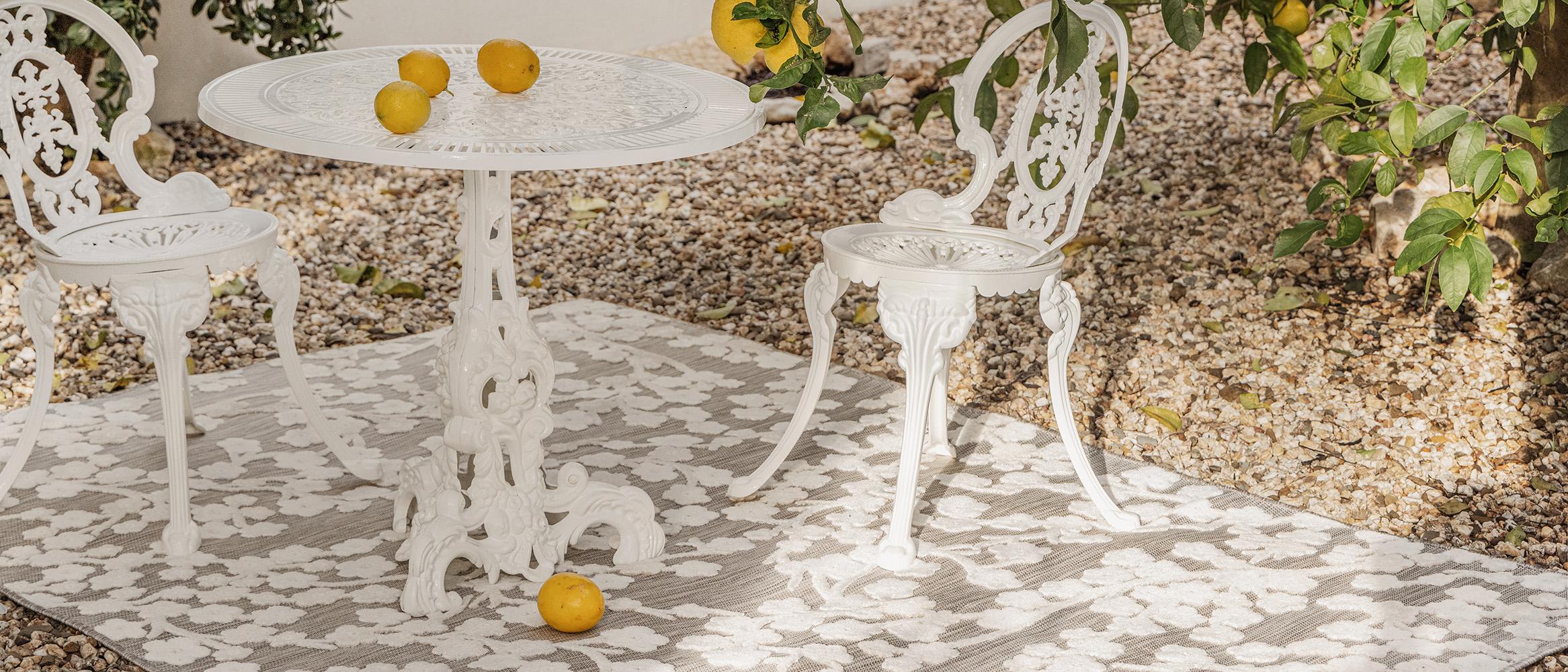
What are outdoor rugs usually made from?
Since rain, sunlight, and dirt aren’t typically very rug-friendly, outdoor rugs tend to be designed to survive the harsh conditions that might occur on your balcony, patio or wood deck. To achieve this weather resistance, outdoor rugs are often made from synthetic materials (Polypropylen). As well as being durable and weatherproof, syntethic outdoor rugs are lightweight and rollable, making them easy to store away in the winter season.
What is the best material for an outdoor rug?
The best outdoor rug materials are durable, weather-resistant and versatile. But, with plenty of different options to choose from, finding the right material for your space isn’t always easy. Below, we’ve outlined some of the most popular and best rug materials for outdoor use.
The versatility of polypropylene: a top material for outdoor rugs
When looking for an outdoor rug, it’s impossible not to cross paths with polypropylene. Polypropylene is often considered one of the best rug materials for outdoor use. The material is comfortable and provides the same feel underfoot as a natural fibre rug, but it has many other advantages. The nature of the material makes it innately hypoallergenic, so it’s a good choice for anyone who suffers from discomfort when exposed to natural fibers. Polypropylene doesn’t shed at all, is easy to clean, and is water resistant, making it low maintenance and the perfect choice for open-air areas.
Since polypropylene is strong and durable, it’s suitable for high-traffic areas, making it one of the best materials for outdoor decks. It can also be treated to withstand UV exposure better. Due to the characteristics of the material, most polypropylene rugs are thin, like flatweave rugs. When you think about it, a thick and cozy high-pile rug wouldn’t be so comfortable after exposure to heavy rain in your outdoor area. Instead, a low outdoor rug is better suited for outside use.
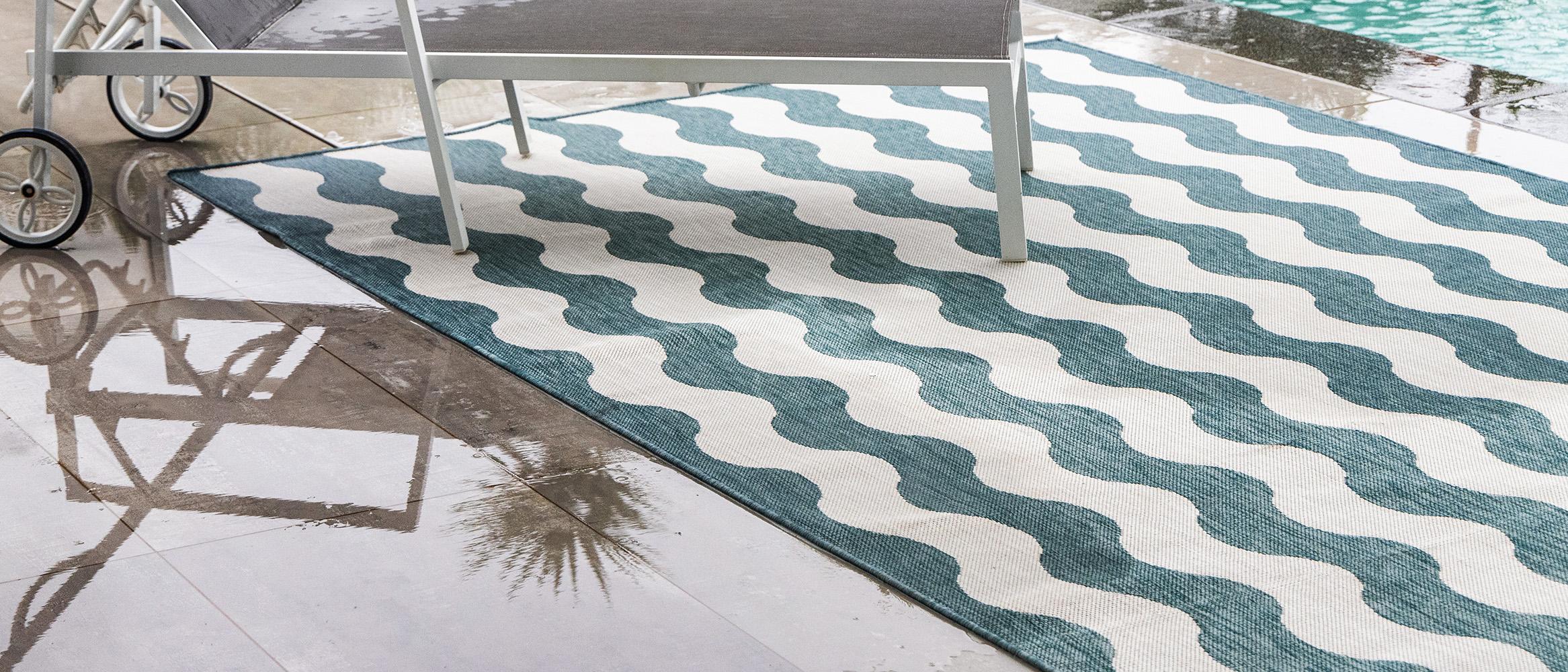
Recycled polyester: A rival to polypropylene?
Depending on your needs and the specific area where you want to place your rug, there are a couple of things you can look for when choosing an outdoor rug material. Polypropylene and polyester share several characteristics, both being durable materials well-suited for outdoor use. Both materials can withstand rain, moisture and dew. Still, polypropylene is often considered one of the best outdoor rug materials for rain — due to its water resistance — while polyester can be a bit more absorbent.
In our assortment, we offer outdoor rugs made from recycled polyester. For these rugs, worn-out but recycled PET bottles have been converted into textile fibers, and this PET yarn is then used for woven rugs. The recycled polyester material is treated to be UV-resistant, so the rug’s color won’t fade in the sun over time, making it ideal for any balcony, patio or garden space.
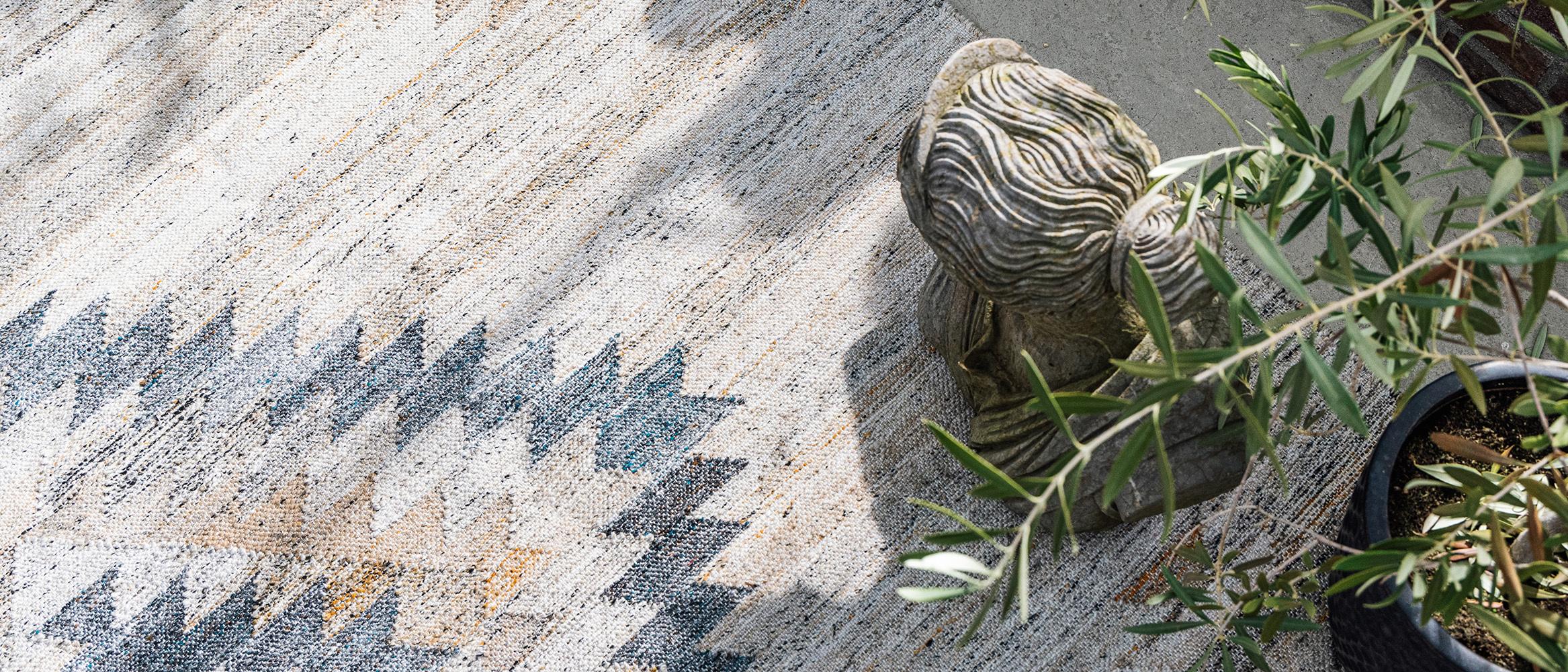
Plastic outdoor rugs: versatile and colorful
One of the easiest ways to bring a splash of color to your patio or balcony might be with a plastic outdoor rug. They’re easy to clean and require minimal maintenance, perfect for your exterior spaces. Our plastic outdoor rugs are water-resistant and treated to withstand UV light better. They come in various color combinations and patterns, so it’s easy to find just the right rug for your style and needs.
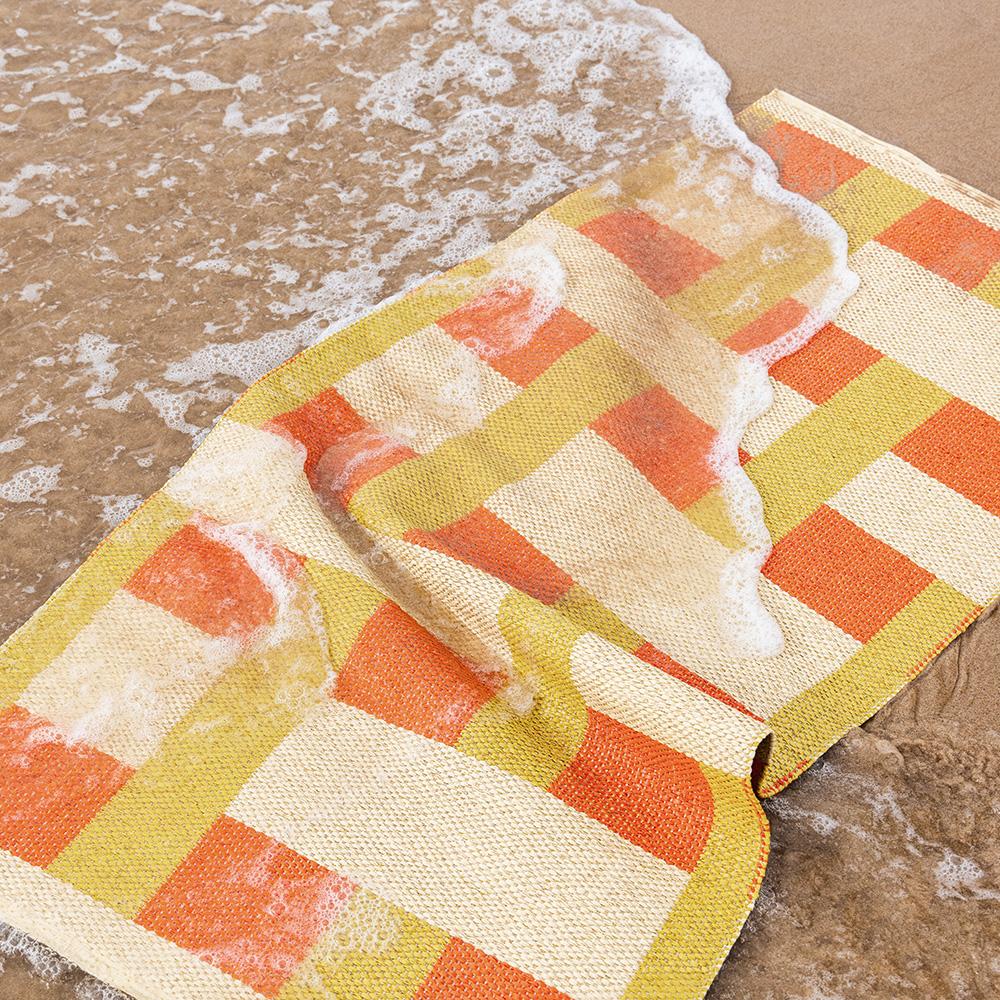
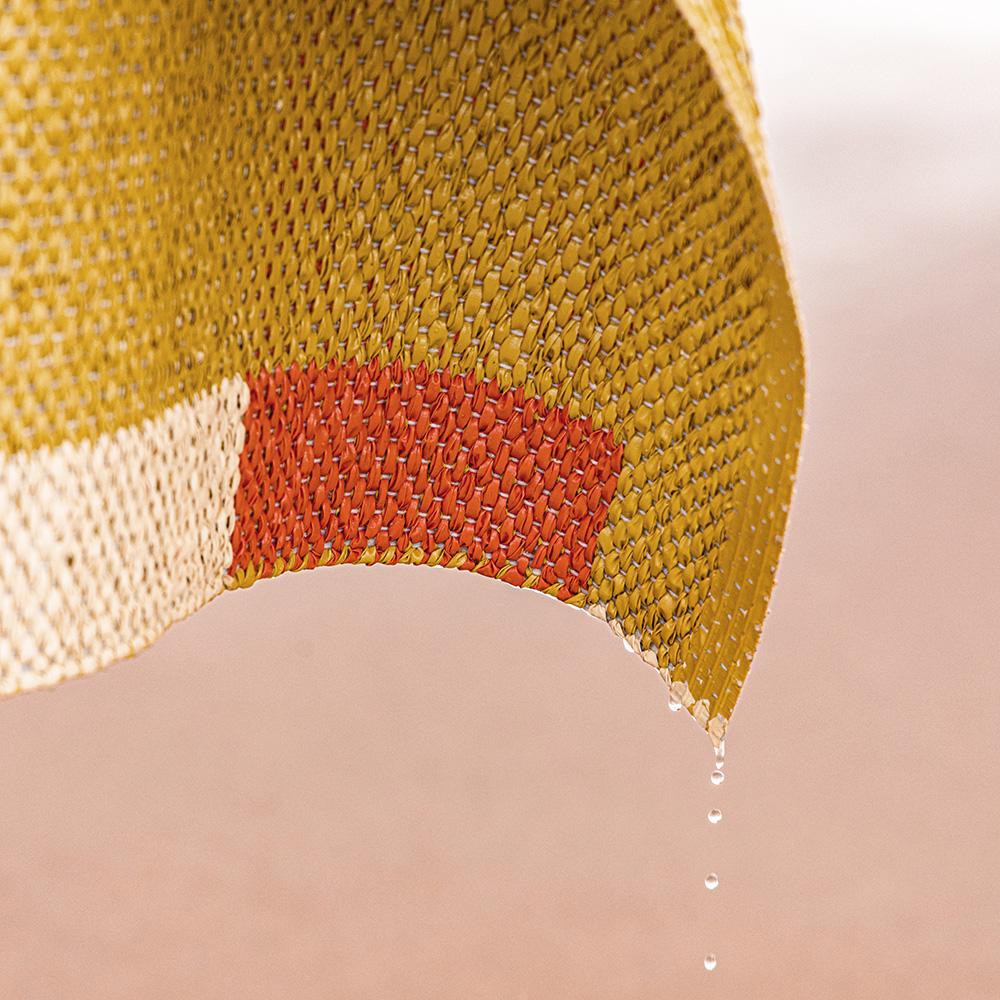
Jute: Is it an option for your outdoor rug?
As opposed to synthetic materials, a jute outdoor rug offers a natural touch to your outdoor space. Jute, derived from the tropical white jute plant’s bark, is spun into textile threads for rug making. Its natural color ranges from off-white to brown and can be dyed while maintaining its down-to-earth look and feel. When choosing a jute rug for outdoor use, remember that their natural fibers are sensitive to sunlight and moisture. Still, you can use them temporarily in covered areas like a roofed balcony.
